Traditional vulnerability scans offer little comfort in a world where attack surfaces evolve by the hour. Between misconfigured cloud assets, exposed APIs, and shadow IT, organisations are increasingly operating in the dark — with no continuous way to measure or manage their exposure.
It’s a visibility gap attackers are all too eager to exploit.
And it’s a problem that point-in-time assessments can’t solve. Static snapshots don’t reflect the pace of change or the evolving ways adversaries probe for weakness. That’s why more businesses are moving toward Continuous Threat Exposure Management (CTEM): a strategic, risk-based approach that doesn’t just identify exposures — it prioritises, validates, and drives response in real time.
In fact, Gartner predicts that by 2026, organisations that prioritise security investments through a CTEM programme will be three times less likely to suffer a breach.
It’s a bold claim — and one that’s fuelling a rapid shift in how modern businesses approach exposure management. But what exactly is CTEM, and how does it help security leaders stay ahead of threats that never stop moving?
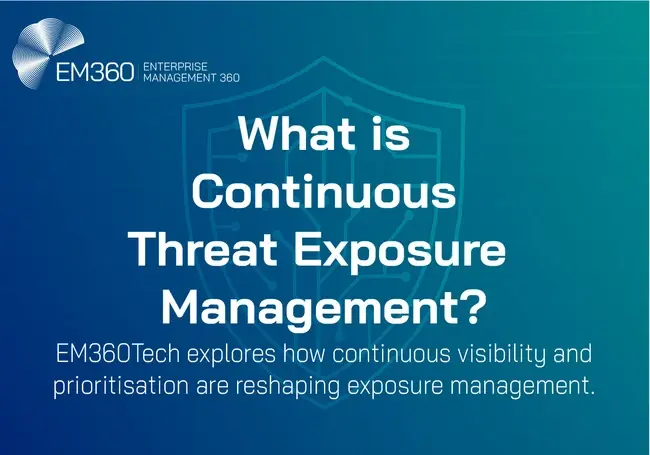
What is Exposure Management?
At its core, exposure management is the process where you identify and reduce the ways your systems, data, and assets can be accessed or exploited by malicious actors. This is not just about figuring out code vulnerabilities. Instead, it’s about making sure you’re also aware of the broader context in which those weaknesses exist.
Misconfigurations, unsecured endpoints, overexposed data, and forgotten assets all fall under the umbrella of exposure. Where risk is a calculation — or a function of likelihood and impact — exposure is more about visibility. Because you can’t reduce what you can’t see. And the more complex your environment becomes, the harder it is to be completely confident about just how clear your view is.
Exposure management in the past relied on a combination of periodic scanning, maintaining asset inventories, and various manual controls. These point-in-time methods may have been more than enough when infrastructure was static and threats evolved a lot slower than they do now. But we’re well into the age of cloud-native architectures, remote work, and API sprawl.
So those static methods simply can’t keep up.
And this is where CTEM diverges from traditional vulnerability management.
Where vulnerability management focuses on known CVEs and remediation workflows, CTEM takes a step back and looks at the bigger picture. It considers not just what could go wrong but how exploitable those exposures really are — and whether attackers could realistically chain them together. In other words, it replaces checklist compliance with contextual prioritisation.
So where traditional methods ask, “What’s vulnerable?”, CTEM asks, “What’s exposed, exploitable, and urgent?”
The Stages of CTEM
Continuous Threat Exposure Management (CTEM) isn’t a one-time assessment — it’s an ongoing programme structured around a repeatable five-stage cycle that was originally developed by Gartner. Just like the name implies.

The aim of this continuous monitoring is helping organisations of all shapes and sizes move from a reactive policy, or firefighting, to a more proactive security policy that’s aligned with actual risks. So clearing overgrowth from around firepits, replacing highly flammable materials with flame retardant ones, and installing better smoke detectors.
Scoping
The first step is to define what actually needs protecting. Scoping involves identifying which parts of the organisation — systems, business processes, applications, or environments — fall within the CTEM programme. This includes understanding the dependencies and interconnections that shape your true attack surface.
Done right, scoping ensures you’re not just securing what’s easy to see — you’re securing what actually matters.
Discovery
Once the scope is set, the focus shifts to visibility. Discovery is about mapping every asset, user, and pathway that could be leveraged in an attack. This includes external assets, shadow IT, exposed credentials, and any misconfigurations or security gaps.
The goal here is to eliminate blind spots — especially in fast-moving cloud or hybrid environments where traditional inventories fall short.
Prioritisation
Not all exposures carry equal weight. Prioritisation introduces context by evaluating the likelihood, exploitability, and potential impact of each finding. This is where CTEM begins to diverge sharply from traditional vulnerability management — factoring in business risk, attacker behaviour, and environmental realities.
It’s not just about what’s broken. It’s about what’s likely to be used against you.
Validation
Exposures only matter if they can be exploited. Validation tests those assumptions. Through red teaming, simulations, and breach-and-attack techniques, this stage separates theoretical risk from actual threat pathways. It’s the reality check that makes prioritisation meaningful.
In practice, this often reveals unexpected chains of attack — not through a single flaw, but through how flaws connect.
Mobilisation
The final stage is about action. Mobilisation closes the loop between insight and response, helping teams coordinate remediation, update controls, and inform executive decisions. But it’s not a finish line — it’s a handoff back to scoping, as environments evolve and new exposures emerge.
When working well, mobilisation ensures CTEM becomes part of the organisation’s rhythm — not just another dashboard to check.
What is a CTEM strategy?
A CTEM strategy is more than a checklist or a toolkit — it’s a long-term programme that aligns cybersecurity with business risk. While the five stages define the framework, it’s the strategy that turns those stages into repeatable, operational reality.
At the heart of any strong CTEM strategy are three things: visibility, modelling, and alignment.
First, you need clear visibility into your assets — across cloud, on-prem, hybrid, and third-party environments. This includes not just known systems but also shadow assets, misconfigurations, and unmonitored entry points that expand your exposure.
Next comes threat modelling. This is where many CTEM programmes begin to differentiate themselves. Instead of treating every exposure equally, advanced CTEM strategies apply context — often through AI and machine learning — to simulate attack paths, predict exploitation patterns, and understand how an adversary might move through a system.
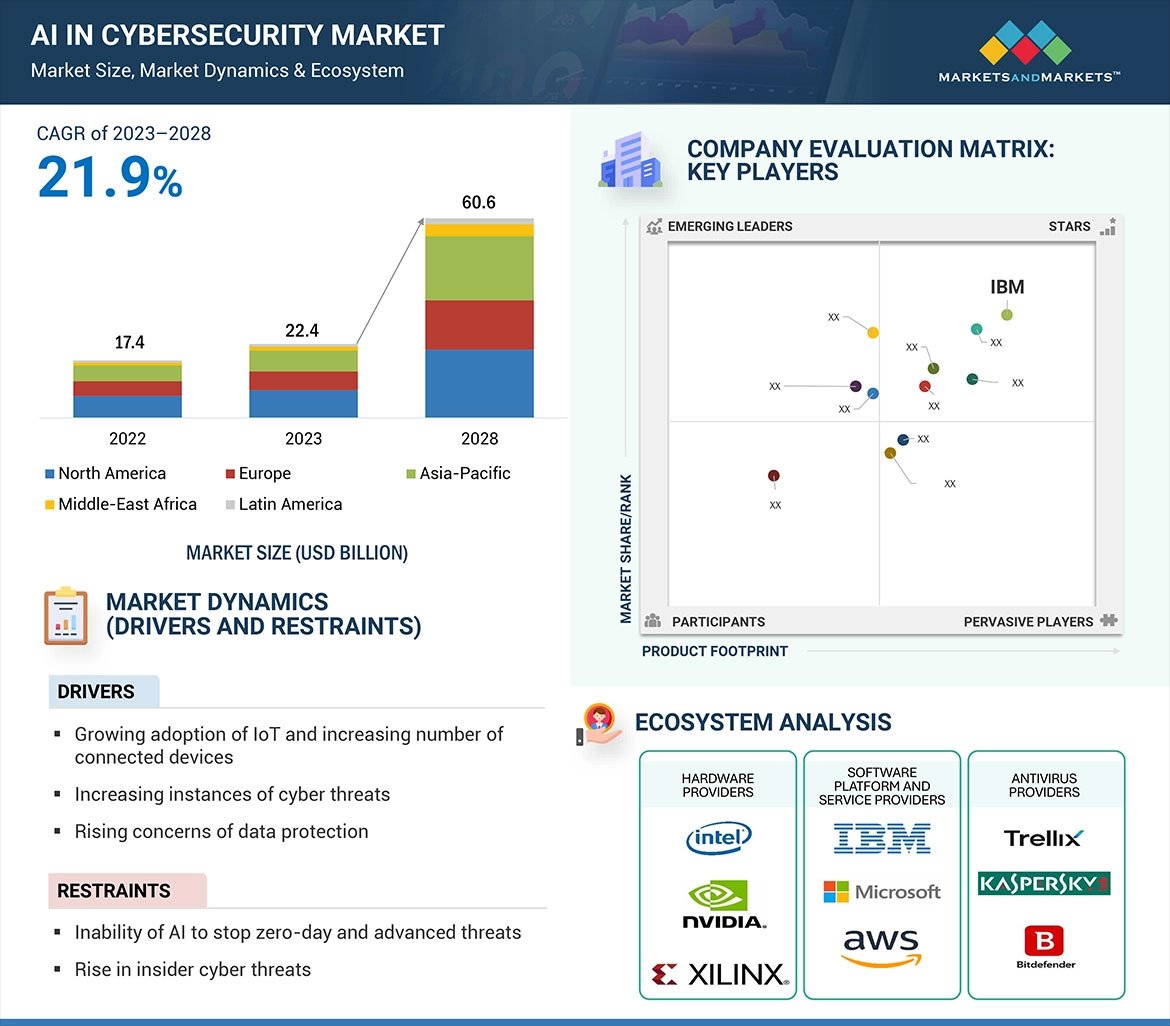
But visibility and modelling only matter if they support the bigger picture. That’s where alignment with business risk comes in. Exposure management has to reflect organisational priorities — whether that’s protecting sensitive customer data, securing critical infrastructure, or enabling secure digital transformation. CTEM helps security leaders stop reacting to alerts and start making decisions based on what actually matters to the business.
Just as importantly, a CTEM strategy demands cross-functional involvement. IT teams manage infrastructure. SecOps handles detection and response. Leadership sets the risk appetite. CTEM only works when these layers operate in sync — using a shared understanding of where the organisation is most exposed and what’s being done about it.
It’s not a tool. It’s not a project.
It’s a framework for continuous, risk-aware decision-making — one that’s fast becoming essential in the face of today’s dynamic threat landscape.
Top 6 Benefits of CTEM
CTEM adoption isn’t just trending — it’s accelerating. According to a recent Gartner study, 29 per cent of organisations have already implemented a CTEM programme, and another 46 per cent are currently developing one. That means three out of four businesses surveyed are either executing or actively investing in continuous threat exposure management.
Here’s why.
1. Proactive risk management and reduced exposure
As we said before, CTEM shifts exposure management from reactive to proactive. Instead of waiting for a breach or scanning on a set schedule, CTEM is always looking for and identifying vulnerabilities, misconfigurations, and potential attack paths in near real-time. So your security teams can reduce the exposure before anyone has a chance to exploit it.
It’s not about fixing every flaw. It’s about fixing the right ones before they become entry points.
2. Improved threat detection and response
Because CTEM integrates threat modelling and validation, it enhances the organisation’s ability to detect meaningful risks earlier. When you combine this with proper prioritisation of these risks, your SecOps teams can respond faster. But more importantly, they can focus their efforts where it matters most — because they know exactly where and what the issue is.
CTEM gives detection context, not just alerts.
3. Enhanced visibility and understanding of the threat landscape
When you consider just how sprawling most organisations' digital ecosystems are these days, it’s easy to understand how it's inevitable that gaps in visibility happen. CTEM is all about doing everything you can to close those gaps.
By continuously monitoring for and discovering assets — including the unmanaged or currently unknown ones — it can map how each asset relates to broader business functions and identify any potential threats.
The result? Fewer blind spots and a more complete view of your security posture.
4. Prioritisation of threats and resources
Not all vulnerabilities are created equal. CTEM helps organisations triage exposure based on exploitability, impact, and business risk. This strategic prioritisation ensures that time, budget, and attention are directed where they’ll have the greatest effect.
Especially in resource-constrained teams, this kind of focus is a force multiplier.
5. Stronger incident response and resilience
By continuously validating security controls and simulating attack paths, CTEM surfaces how exposures could be chained and exploited — before it happens in the wild. This allows incident response teams to rehearse scenarios, identify weak points, and harden systems ahead of time.
It turns response planning into an active, iterative discipline — not a post-breach scramble.
6. Compliance and regulatory adherence
From GDPR and PCI DSS to ISO and NIS2, there are a lot of standards that every business has to comply with. And they also have to be able to show that they’re meeting those standards to whoever asks about it. CTEM makes this a little easier by providing clear audit trails, exposure tracking, and continuous assessments. So your organisation, and its security leaders specifically, know that they’re staying aligned with evolving standards.
More than a checkbox exercise, CTEM brings compliance closer to real-world readiness.

Best Practices for CTEM Success
Implementing CTEM effectively requires more than just tools — it requires a mindset shift. Success depends on embedding the programme into operational rhythms, aligning it with business goals, and ensuring it evolves as threats and infrastructure do.
Here are five key practices that separate CTEM success stories from stalled initiatives.
Define clear objectives and scope
Anything you do needs to start with a strong foundation. So the first thing you need to do is define what you want your CTEM strategy to achieve — and how you’ll measure its success or failure. Whether your priority is reducing mean time to remediate (MTTR), improving attack path visibility, or protecting a specific business unit, clear objectives help anchor your strategy.
You should also start small, then expand outwards and refine as you go. Pilot CTEM in one environment, application, or geography before implementing it in the next one. This makes it just a little easier to learn what works and what doesn’t, tweak what needs tweaking, and then scale your efforts.
And make sure your success criteria are realistic — continuous exposure management isn’t about perfection. It’s about progress you can track and act on.
Gain executive sponsorship and cross-functional buy-in
CTEM will never succeed in a silo. You’ll need to get support from executive leadership so you can secure the necessary funds, champion the solution so that your organisation is more likely to adopt it, and avoid any interdepartmental friction. With their help, you can position CTEM not as another security initiative but as a business enabler that helps reduce risk while unlocking agility.
Involve relevant teams early: IT, cloud operations, compliance, legal, and business leaders. Better yet, build a cross-functional CTEM steering committee to keep the programme accountable, responsive, and well-supported across its lifecycle.
Establish a dynamic asset inventory
CTEM is only as effective as the visibility it provides. Which means you need a comprehensive inventory of your existing assets that also updates in real time. And it needs to go beyond those assets that are officially documented, because unmanaged devices, shadow IT, third-party SaaS platforms, and hybrid workflows are also sources of potential vulnerabilities.
In short, asset inventories should be dynamic, not static — continuously updated as infrastructure changes. This way you’re assessing your exposure based on today’s environment, not last quarter’s.
Assess attack surface risk
With visibility in place, the next step is understanding which exposures actually matter. Use threat intelligence and business context to prioritise what’s most likely to be targeted — and what would hurt most if exploited.
Focus on high-value assets, externally facing systems, and workloads that intersect with sensitive data. Consider risk not just in isolation but across the full attack path. CTEM thrives on contextual risk modelling — not just point vulnerabilities.
Design remediation workflows
Insights only drive outcomes if there’s a clear way to act on them. Define structured remediation workflows for the exposures that CTEM identifies. Wherever possible, automate low-risk, high-volume fixes — such as patching known CVEs or adjusting misconfigurations.
At the same time, build in human oversight for complex or business-critical decisions. Balance automation with accountability, and make sure the workflows are visible, trackable, and aligned with your broader incident response playbook.
Real-World Use Cases of CTEM
While the value of Continuous Threat Exposure Management is clear in theory, its impact becomes even more evident in practice — especially in high-risk, heavily regulated, or rapidly evolving industries. CTEM is gaining ground across sectors, but three in particular are driving early adoption: BFSI, healthcare, and retail.

In the banking, financial services and insurance market, CTEM is being used to secure vast, distributed infrastructures that span on-premises systems, cloud workloads, third-party fintech integrations, and mobile apps. With billions in transactional data flowing through these environments daily, exposure management helps banks and insurers reduce operational risk while supporting compliance with frameworks like PCI DSS and DORA.
In healthcare, the stakes are personal. CTEM is helping hospitals, pharmaceutical firms, and healthtech providers protect electronic health records, clinical research data, and the often-overlooked IoT devices powering modern patient care. It also supports HIPAA and GDPR adherence by enabling continuous monitoring and validation of access controls and data pathways.
In retail, exposure isn’t just about data breaches — it’s about continuity. With supply chains, e-commerce platforms, and POS systems interconnected across global networks, CTEM helps retailers stay ahead of evolving threats without slowing down digital innovation. As ransomware groups increasingly target logistics and fulfilment systems, continuous exposure management is becoming a critical safeguard.
Across all three industries, the drivers are consistent:
- Growing attack surface complexity
- Increasing regulatory scrutiny
- The need to protect sensitive data while remaining agile
And the outcomes speak for themselves.
Organisations that implement CTEM see faster identification of exploitable exposures, clearer prioritisation of remediation efforts, and improved board-level reporting on cyber risk. Over time, this leads to reduced breach likelihood, lower recovery costs, and tighter alignment between security investment and business value.
For industries where “good enough” security is no longer good enough, CTEM is becoming a strategic differentiator — not just a defensive measure.
Continuous Threat Exposure Management tools
As CTEM adoption accelerates, the tools that enable it are evolving just as quickly. According to recent projections, the global market for CTEM solutions is expected to grow at a compound annual growth rate of 10.1 per cent through 2029 — a clear sign that organisations aren’t just curious; they’re investing.
But CTEM isn’t a single product. It’s a programme supported by an ecosystem of technologies. Most organisations draw from several tool categories to build out their CTEM capabilities:
- Attack surface management (ASM): Tools that continuously map and monitor digital assets — especially those exposed to the internet — to uncover unmanaged infrastructure, expired certificates, and shadow IT.
- External attack surface management (EASM): A subset of ASM that focuses on the organisation’s externally visible footprint, helping to identify exposures attackers could find before internal teams do.
- Breach and attack simulation (BAS): Platforms that mimic real-world attack techniques to validate controls, test defences, and surface exploit chains that might otherwise go unnoticed.
- Threat exposure management platforms: Integrated platforms that combine discovery, prioritisation, validation, and remediation workflows into a single operating model.
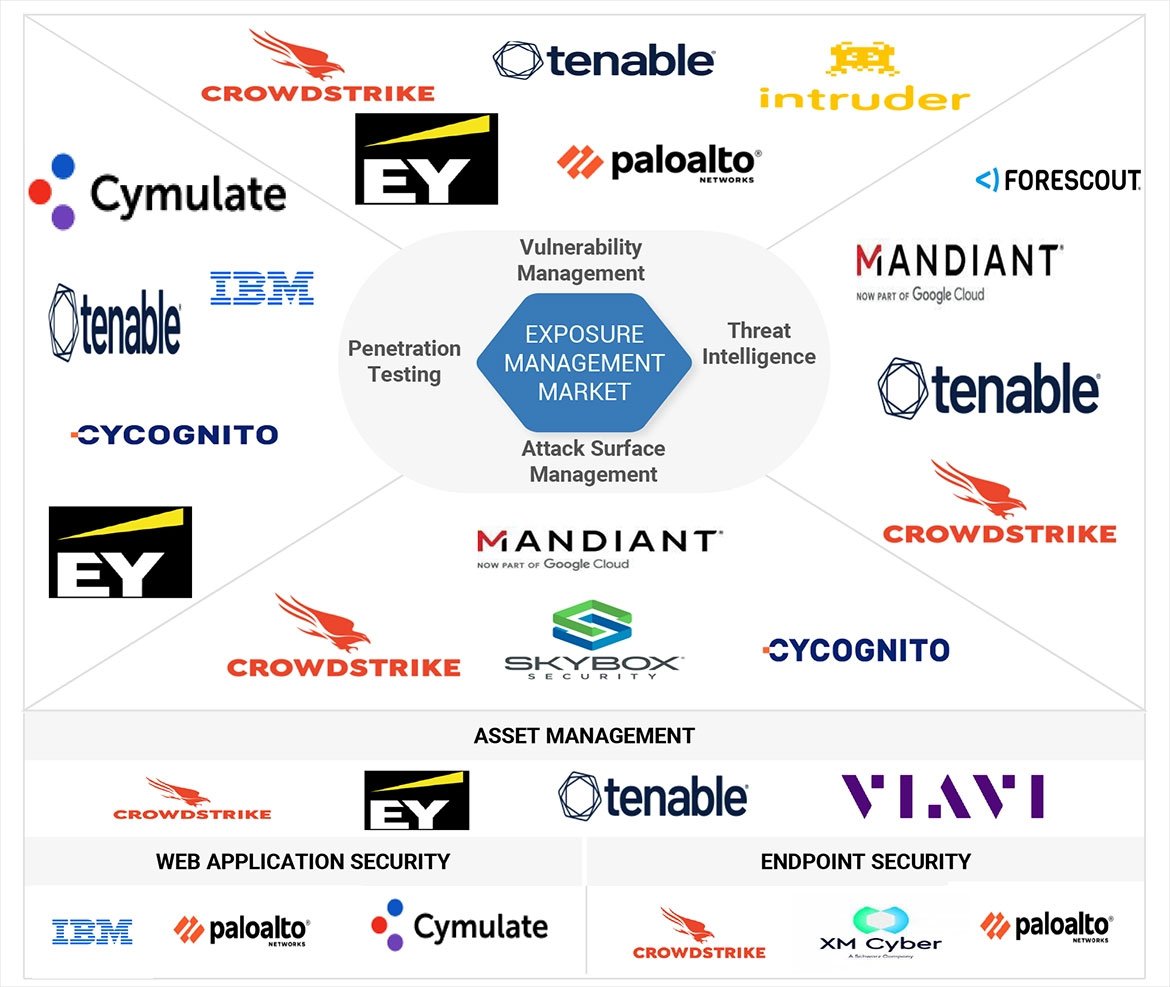
Several notable vendors are shaping this space with differentiated approaches:
- XM Cyber offers continuous exposure management with attack path simulation to uncover how exposures could be chained together in a real attack.
- CrowdStrike integrates threat intelligence, endpoint detection, and external surface analysis to support continuous assessment.
- Balbix focuses on real-time cyber risk quantification, using AI to prioritise exposures based on business impact.
- Cymulate delivers breach and attack simulations designed to validate security control effectiveness and incident readiness.
- Zscaler applies CTEM principles to cloud environments, enabling continuous risk assessment across hybrid infrastructure.
- Microsoft Defender EASM extends visibility across cloud and edge environments, tying exposure insights to broader security response.
What unites these platforms isn’t the tooling itself — it’s the shift in mindset. These solutions are designed for continuous assessment, not periodic scanning. They reflect the operational cadence of modern security programmes: always moving, always learning, and always ready to act.
Other Frequently Asked Questions About CTEM
Even with a solid understanding of exposure management, some questions still come up time and again — especially from business leaders trying to connect technical priorities to real-world impact. Here are some of the most common ones.
How is CTEM different from continuous monitoring?
While both offer ongoing visibility, continuous monitoring typically focuses on detecting events or anomalies as they happen — like intrusions or misconfigurations. CTEM, on the other hand, is about discovering, prioritising, and reducing exposure over time. It's proactive, not reactive.
Can small or midsized businesses implement CTEM?
Yes — in fact, starting small is one of the best practices. CTEM can begin with a narrow scope, like a single environment or business unit, and scale over time. Many tools now offer modular capabilities that support phased rollouts, even for leaner teams.
Does CTEM replace vulnerability management?
No — it extends and enhances it. Vulnerability management is still part of the equation, but CTEM provides the strategic layer above it: adding prioritisation, threat context, and exposure validation to drive smarter decisions.
What teams are usually responsible for CTEM?
CTEM typically sits across multiple teams — including SecOps, IT, GRC, and executive leadership. That’s why cross-functional coordination is critical. Ideally, a dedicated CTEM steering group or programme owner oversees implementation and integration.
How long does it take to see value from a CTEM programme?
It depends on the maturity of your environment and how you roll it out. But even in the first 90 days, organisations usually see improvements in visibility, faster remediation cycles, and better prioritisation of security resources.
Final Thoughts: Continuous Exposure Needs Continuous Strategy
Cyber threats aren’t slowing down — and neither is the complexity of the environments we’re trying to protect. As digital transformation accelerates, the idea of managing exposure with static tools and point-in-time scans starts to feel more like wishful thinking than strategy.
That’s why Continuous Threat Exposure Management (CTEM) is gaining momentum. It gives organisations a way to take control of their attack surface, prioritise what matters most, and respond with confidence — all without waiting for a breach to prove the point.
The path forward isn’t about adding more tools. It’s about building programmes that adapt in real time, align with business risk, and scale with your infrastructure. And that’s exactly what CTEM is designed to do.
To hear how other organisations are putting these strategies into practice, explore EM360’s podcast interviews with industry leaders — or dive into the latest CTEM whitepapers shaping this conversation.
Because exposure doesn’t pause. And neither should your strategy.




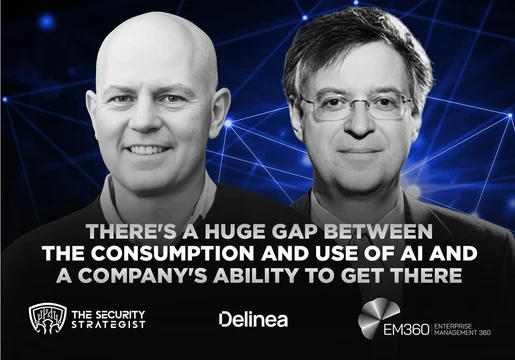
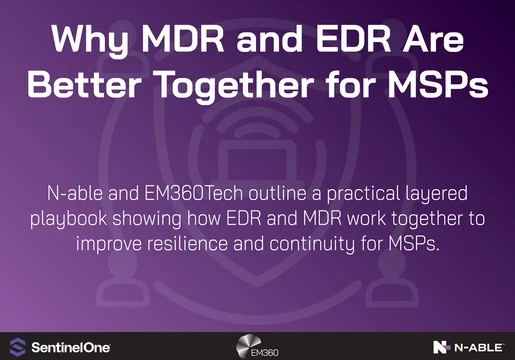
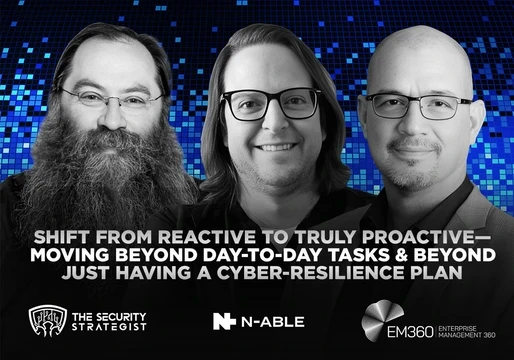
Comments ( 0 )